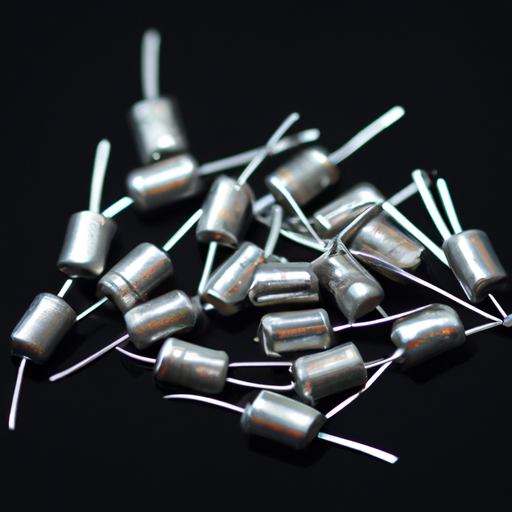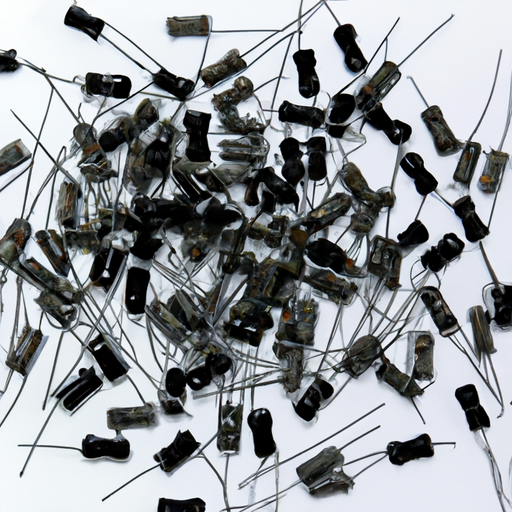Inductor unit product training precautions
Inductor Unit Product Training Precautions
I. Introduction
Inductors are fundamental components in electronic circuits, playing a crucial role in energy storage, filtering, and signal processing. As passive components, they store energy in a magnetic field when electrical current flows through them. Understanding inductors and their proper handling is essential for anyone involved in electronics, whether in manufacturing, design, or maintenance. This blog post aims to provide a comprehensive overview of inductor unit product training precautions, ensuring that individuals are well-equipped to work safely and effectively with these vital components.
II. Understanding Inductors
A. Basic Principles of Inductance
Inductance is the property of an electrical conductor that opposes changes in current. When current flows through an inductor, it generates a magnetic field around it. If the current changes, the magnetic field also changes, inducing a voltage that opposes the change in current. This principle is the basis for how inductors function in circuits.
B. Types of Inductors
Inductors come in various types, each suited for specific applications:
1. **Air-core inductors**: These inductors do not use a magnetic core, making them suitable for high-frequency applications where low losses are essential.
2. **Iron-core inductors**: These inductors use an iron core to increase inductance and improve energy storage, making them ideal for power applications.
3. **Ferrite-core inductors**: Ferrite cores are used to minimize losses at high frequencies, making them suitable for RF applications.
4. **Toroidal inductors**: These inductors have a doughnut-shaped core, which helps reduce electromagnetic interference (EMI) and improves efficiency.
C. Applications of Inductors in Various Industries
Inductors are widely used across various industries, including telecommunications, automotive, consumer electronics, and power management. They are essential in applications such as power supplies, filters, transformers, and energy storage systems.
III. Safety Precautions
A. General Safety Guidelines
Safety is paramount when working with inductors. Here are some general safety guidelines:
1. **Personal Protective Equipment (PPE)**: Always wear appropriate PPE, including safety glasses, gloves, and anti-static wrist straps, to protect against electrical hazards and physical injuries.
2. **Electrical Safety Measures**: Ensure that all equipment is properly grounded and that you follow lockout/tagout procedures when working on electrical systems.
B. Handling Inductors
Proper handling of inductors is crucial to prevent damage and ensure safety:
1. **Avoiding Physical Damage**: Handle inductors with care to avoid physical damage, which can lead to performance issues or failure.
2. **Proper Storage Techniques**: Store inductors in a clean, dry environment, away from direct sunlight and extreme temperatures. Use anti-static bags or containers to prevent electrostatic discharge (ESD) damage.
C. Working with High-Frequency Inductors
High-frequency inductors, such as RF inductors, present unique risks:
1. **Risks Associated with RF Inductors**: High-frequency signals can cause burns or other injuries if proper precautions are not taken. Always be aware of the potential for high voltages and currents.
2. **Mitigating Electromagnetic Interference (EMI)**: Use shielding and proper layout techniques to minimize EMI when working with high-frequency inductors.
IV. Quality Control Measures
A. Importance of Quality in Inductor Manufacturing
Quality control is essential in inductor manufacturing to ensure reliability and performance. Poor-quality inductors can lead to circuit failures and safety hazards.
B. Testing Procedures for Inductors
Several testing procedures are used to ensure the quality of inductors:
1. **Inductance Measurement**: This test measures the inductance value to ensure it meets specifications.
2. **DC Resistance Testing**: This test checks for excessive resistance, which can indicate defects or poor connections.
3. **Saturation Current Testing**: This test determines the maximum current the inductor can handle before it saturates, affecting its performance.
C. Common Defects and How to Identify Them
Identifying common defects in inductors is crucial for quality assurance:
1. **Open Circuits**: An open circuit indicates a break in the winding, leading to a complete loss of inductance.
2. **Short Circuits**: A short circuit can occur between turns of the winding, causing excessive current flow and potential damage.
3. **Inductance Drift**: Changes in inductance over time can indicate aging or environmental effects, necessitating regular testing.
V. Training Procedures
A. Overview of Training Modules
Effective training is essential for ensuring that personnel are knowledgeable about inductors:
1. **Theoretical Knowledge**: Training should cover the principles of inductance, types of inductors, and their applications.
2. **Hands-on Training**: Practical experience is vital for understanding how to handle and test inductors safely.
B. Assessment and Evaluation Methods
To ensure comprehension, various assessment methods can be employed:
1. **Quizzes and Tests**: Regular quizzes can help reinforce theoretical knowledge.
2. **Practical Demonstrations**: Hands-on assessments can evaluate the ability to handle and test inductors correctly.
C. Continuous Education and Updates
The field of electronics is constantly evolving, making continuous education essential. Regular updates on new technologies, safety practices, and industry standards should be provided to all personnel.
VI. Environmental Considerations
A. Impact of Inductors on the Environment
Inductors can have environmental impacts, particularly in terms of materials used and energy consumption. Awareness of these impacts is essential for responsible manufacturing and usage.
B. Recycling and Disposal of Inductors
Proper recycling and disposal methods should be followed to minimize environmental harm. Many components of inductors can be recycled, and it is essential to follow local regulations regarding electronic waste.
C. Compliance with Environmental Regulations
Adhering to environmental regulations is crucial for manufacturers and users of inductors. Compliance ensures that operations are sustainable and responsible.
VII. Conclusion
In conclusion, understanding inductor unit product training precautions is vital for anyone involved in electronics. By adhering to safety guidelines, quality control measures, and continuous education, individuals can ensure safe and effective handling of inductors. The importance of ongoing learning and safety practices cannot be overstated, as they contribute to the reliability and performance of electronic circuits.
VIII. References
For further reading and resources, consider the following:
1. Suggested readings on inductors and their applications.
2. Industry standards and guidelines for inductor manufacturing and testing.
3. Additional resources for continuous education in electronics and safety practices.
By following these guidelines and recommendations, individuals can enhance their knowledge and skills in working with inductors, ultimately contributing to safer and more efficient electronic systems.






